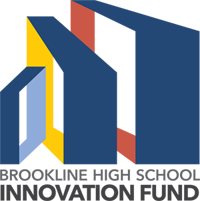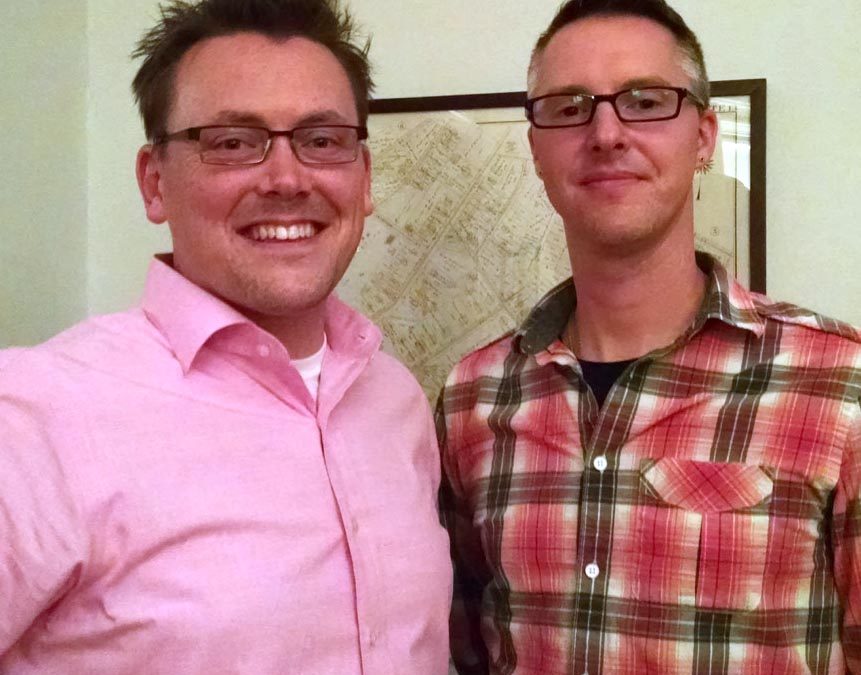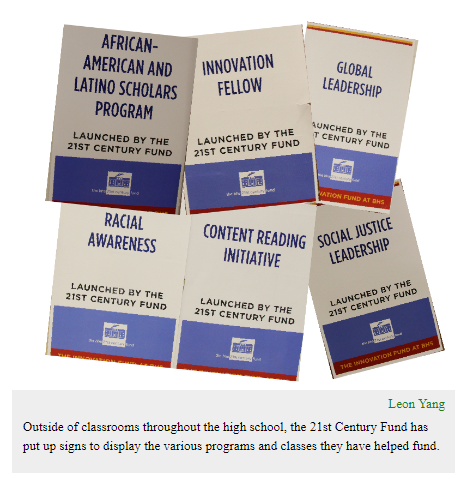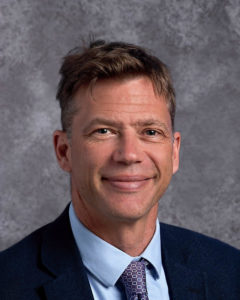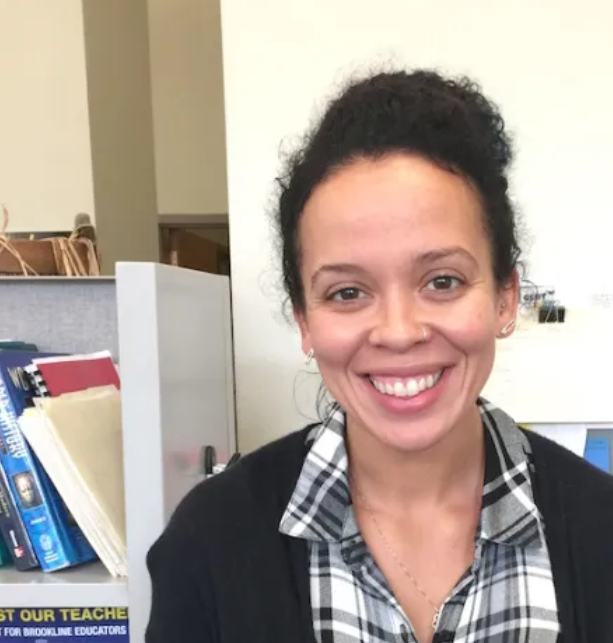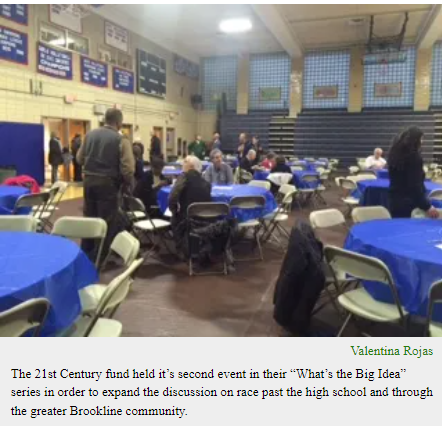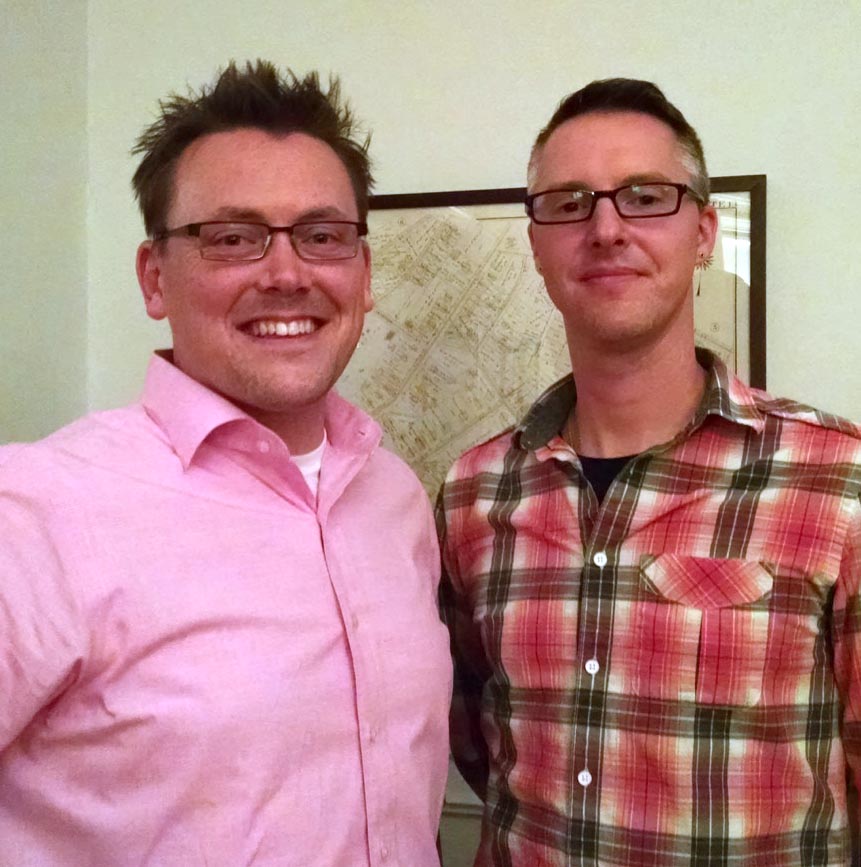
A conversation with Aubrey Love (Physics) and Andrew Maglathlin (Art) about Engineering Innovation and Design, the class they are currently developing with support from the 21st Century Fund
21CF: Let’s start with a description of the new class.
Andrew Maglathlin: Sure, well it’s still in process. The course is going to be co-taught by myself and Aubrey, so we’ll be combining my art background with his science/engineering background. The exact plan is a bit of a moving target at this point, but we know that project-based learning and collaboration will definitely be key elements of the course.
Aubrey Love: We want to bring together that STEAM side of things; we want students to experience engineering and problem solving, and also design and aesthetics — both at the same time. Nailing down exactly what we’ll be able to do is a little tough. There’s a huge scope, and we’re still trying to figure out what we can reasonably accomplish in one course.
21CF: How will this new class differ from the other Engineering classes at BHS?
AL: Currently we have Engineering the Future — that’s a freshman course that is run just in Career & Tech Ed. And then there’s Engineering By Design, which I teach. The name refers to an engineering design process — it’s a step-by-step method for how you go through an engineering problem-solving process. It feels like a misnomer a little bit since there’s no artistic design aspect of that class. So now I’m really trying to take that course to the next level. Kids in my course collaborate, they problem-solve, it’s very project-based. Every challenge that I put them through requires them to work their way through research, prototyping, designing, and developing a solution, but never do they spend the time and energy needed to worry about the aesthetic side of design. And that’s where Andrew comes in. His expertise will help students think about the user end. They’ll have to think about what people say, feel, experience — not just the functionality of the thing.
AM: Function and aesthetics will definitely be a huge part of the curriculum. Also it’s really important to us that students will actually be creating things, executing their designs. They’ll need to see their projects through from start to finish. That’s going to include presenting their work to other people, so they’ll need to learn how to do some drafting and present their ideas visually.
AL: Presenting to different types of groups is key. Some of it’s going to be as if they’re creating proposals. For example, maybe they’d show their design proposal to a craftsperson, like maybe a woodworker, and ask if that person would be interested in building their designs. Or say there’s something they want to provide the community — they’d need to be able to present their idea to the people who’d be in a position to implement it. Or even just presenting something to peers — how do you present in each case? They’ll need to understand how people perceive their ideas so they’ll know how to best communicate those ideas.
AM: They’ll need to understand how the user will benefit from whatever solution they’re proposing for a particular problem, so they’re also going to be gathering feedback. They’re going to be researching things for the projects themselves, but we also want them to research the market. Like if you came up with an idea for a cell phone case, how would you go about moving from creating it on your 3D printer to getting it produced? For each project we’ll be looking to introduce different ideas and tools that will help them learn about involving the community, and working in different kinds of teams.
21CF: Do you already have some specific projects in mind?
AM: We do. The goal is to give them a broad question so that they can approach it in whatever way interests them the most. The parameters and guidelines that we’re planning to give them will probably be a little more open than what they’re used to.
AL: The example we started this whole course with was an idea for a bridge project. We asked the question: How can a bridge be more than just a mode of transportation, more than just a way of getting from point A to point B? We sort of went through the project a little bit ourselves. We were interested in the community aspect, and we thought about the Braga Bridge.
AM: Yes, the Braga Bridge down in Fall River. Fall River is an old mill town, and we wanted to somehow offer something to that community. Our idea was to create a park that comes off of the bridge, so that people could stop and enjoy the view. People could go up to a green-space over the Taunton River, and maybe there’d be a place to get coffee, or a performance venue or something like that. We thought it could make a good tourist attraction to bring people to that community. Another idea was based on something we heard about the Golden Gate Bridge in San Francisco. I’m not 100% sure this is true, but apparently there’s a team of painters that are always painting the bridge. And so maybe if you’re a student who’s more interested in robotics than green-spaces, you could design a bridge that has robots that can move around it and scan it, and also paint it, so it would be a self-maintaining bridge. Or maybe you’re thinking about materials. Maybe your idea is to build a bridge out of easily found materials, which could connect two places where the people don’t have a lot of resources. The idea is to have a big question that students can pursue in a variety of ways. Hopefully every student, every group of students, is coming up with something different.
21CF: What kinds of students do you expect will be drawn to this course? I imagine there will be plenty of engineering students, but do you think there will be any art students who may want to dip their toe in the engineering pool?
AM: You know I think so, and we’re thinking hard about exactly how we want to write up the course description because we want to have a very balanced class, with students that have different skills and interests. I believe if the students understand it correctly then there will be plenty of art students interested in taking the class. They would have the opportunity to use all kinds of tools to create — we have 3D printers, computerized routing machines, laser cutters, and things like that. I’ve done a little unofficial research and presented the possibility to my students in Ceramics and Sculpture. A lot of them seem very interested.
21CF: Are there any other programs, local or national, that inspired you to design this course?
AL: The first one that really caught our attention was NuVu. They do a lot with project-based learning, and also, I think, with art and design. Learning about that school made us realize that there is an entity out there that caters to kids in ways that we don’t. It’s an indication of what we’re missing, and we wanted to provide this element of education here at BHS. We also have a lot of kids that go on to another level of education, and we don’t feel like we’re necessarily setting them up in a perfect way, because they don’t know how to use their hands. They go into a mechanical engineering degree or something like that and they don’t have the right skill-set. They have an incredible background in AP sciences and AP math, but something’s missing. I think all of those things proved to be the stimulus for this. We’re hoping to provide a better general high school experience for a lot of kids.
21CF: And how about the “makerspace”? Do you think that might be available for use outside of class?
AL: The space issue is going to be its own monster. Next year there will be 60-80 kids in the space for five or six blocks during the day. We want it to be open for kids to come and do work outside of class — independent project work. We would also love to make it available for teachers to bring their classes in for small projects. It’s already kind of happening with our Woodworking classes and Engineering the Future classes. Manning the space is going to be a huge issue, but yes, we’d love the space to be available to kids as much as possible.
AM: We would love it if kids could come in outside of class, and even outside of school, because so many students are bogged down during the school day with all their courses. The dream would be that it is open for a period of time outside of school, giving the students that are in the course, and hopefully other students too, the opportunity to come in and further their projects. There’s only so much they can do on their own without the 3D printers, laser cutters and other specialty tools.
21CF: Other than the high-end machines, what kinds of tools do you expect to have in the space?
AL: We want kids to be able to realize their ideas in a variety of ways. That’s going to include things from glue guns to hammers to drills to sandpaper. We have the luxury of having inherited a lot of hand tools from the automotive shop, which used to be in this space. The nice thing about having space in the UA building is that we have amazing resources above us and next to us.
AM: The technologically advanced equipment is really important, but it’s not everything. One of the really amazing things about creating this course and creating the makerspace is that there’s no set way of doing it. We’ve visited some different spaces, and the more we see the more we realize that everyone is doing it a little bit differently. Over at Newton North they have “greengineering.” That happened because there were certain conditions, and certain people over there that made it right for them. Here at Brookline we’re really tailoring it to our expertise and what we think the students should learn, and what they want to learn. And I think the course will constantly be changing and evolving, because if you’re not innovating it’s pretty much over. It’s done.
21CF: This seems like a really huge undertaking. Do you think you’re on track to actually have something ready for the fall?
AL: The course will evolve based on the kids that show up. And so our job really is to set them up with the right questions and then support them as we move forward. So we’ll be ready as long as we get to a place where we feel comfortable figuring out how to assess kids and support them in a real way. Project-based learning takes some doing, and some practice for the teachers. We don’t want to give them the answers or be too supportive, because we want kids to go through the experience of trial and error. And so that’s what we’ll be focusing on in the next couple of months. We need to figure out how much freedom we can give kids and still have them walk away with something. We don’t want everything be theoretical.
AM: Not at all. We want them to be creating things. If it’s too open-ended we’re worried that they won’t get to that point, so we’re trying to figure out how to be supportive enough in defining the project so they end up with a finished product, not just something made out of string and cardboard.
21CF: Before I let you go, I’m curious about what you each, personally — as teachers and as individuals — hope to get out of this experience.
AL: Coming from a science background, and even just my natural tendencies, I’m all about problem-solving in terms of functionality. And how that translates in my classroom is, my kids end up with a lot of ugly stuff. They’re constantly asking me to help them with the aesthetic side of things, but I feel unable to support them in a way that’s beyond my own personal taste. And that’s frustrating, because I feel like I’m only giving them a partial experience. They really should be thinking about both the structural and aesthetic aspects of developing a project. So that’s something I hope to learn from Andrew. I’d like him to help me understand how to ask the right questions and help kids make the right decisions beyond the physical structure. I look forward to being able to watch Andrew do what he does; see what he says and what he doesn’t say. The hardest part with project-based learning as a teacher is you have to know what not to say and what not to teach — what things to tell the kids and what things to let them experience on their own. And I think that nuance is what I’ll be learning the most from Andrew.
AM: A couple of years ago the two of us worked together on the STEAM project, and we really clicked because we’re both constantly trying to figure out how to make things more efficient, how to get them to work, and we were thinking a lot about our projects and our courses. But we think about things differently, and Aubrey’s coming from the physics side and the science side, which is something I’m not terribly familiar with. So I think the two of us coming together is a great match for teaching engineering and innovation. Aubrey understands materials in a particular way — he understands things like force. I understand materials more from hands-on experience. Aubrey’s really a lot more technologically advanced than I am, so when it comes to the computer modeling programs I’m definitely going to be learning a lot from him. But also his character is a huge influence. He’s a really grounded person, he’s very thoughtful, and that grounding and that methodical approach really helps me to get a grasp on what we’re doing.
AL: And that’s an added benefit to co-teaching in general: regardless of the skill sets within our content areas that we bring, we’re different teachers. You learn from watching other people teach regardless of who’s bringing what knowledge base. I think our different backgrounds naturally lead us to being different types of teachers. What we demand every day of our kids is different. Our interactions with kids on a one-on-one basis is different, so I think we’ll learn a lot just about teaching from this experience. It’s a really great opportunity.
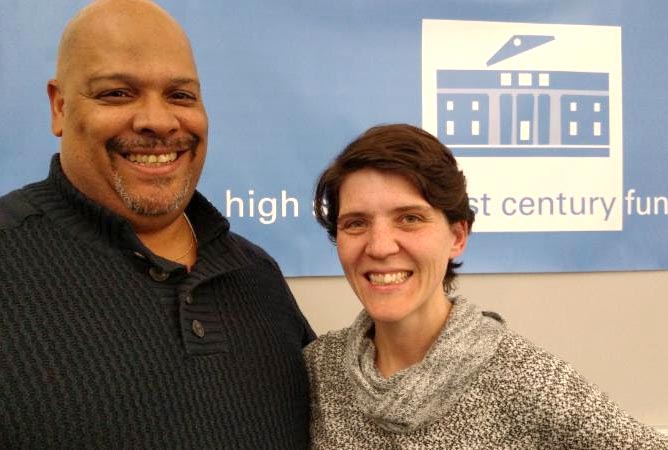
 The Racial Awareness Seminar is a year-long sophomore elective that was seeded by the 21st Century Fund in 2016-2017. This seminar-style class is designed to foster students’ capacity to reflect on and speak effectively about racial identity, and to create a learning community that embraces and is empowered by the rich diversity of identities and perspectives at BHS.
The Racial Awareness Seminar is a year-long sophomore elective that was seeded by the 21st Century Fund in 2016-2017. This seminar-style class is designed to foster students’ capacity to reflect on and speak effectively about racial identity, and to create a learning community that embraces and is empowered by the rich diversity of identities and perspectives at BHS.